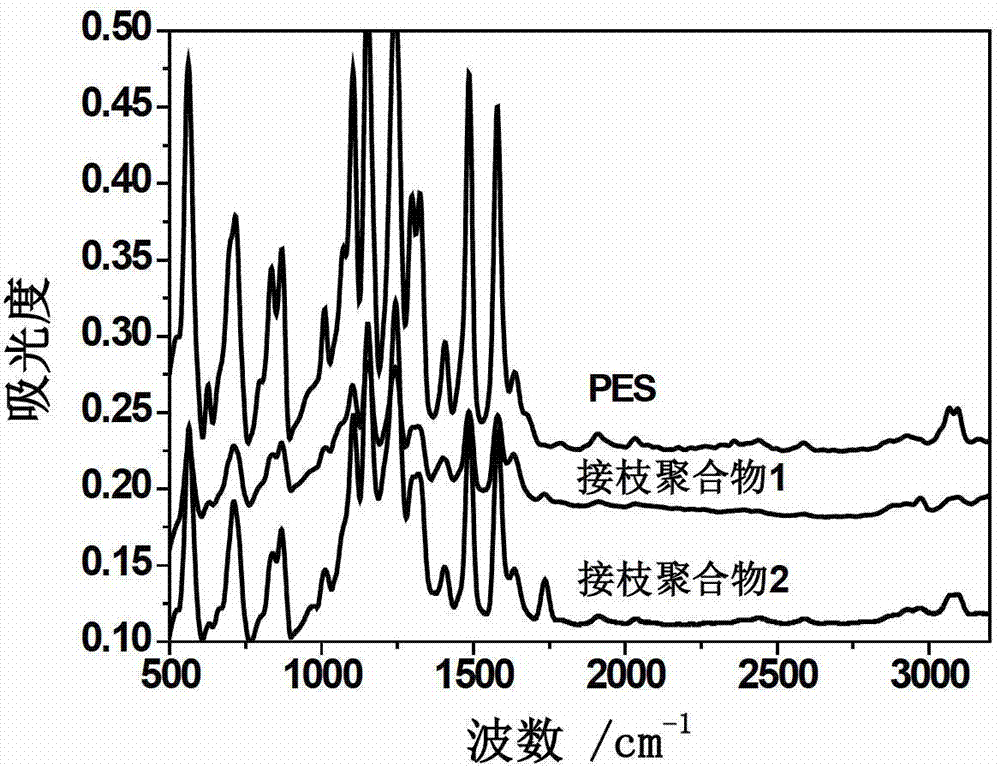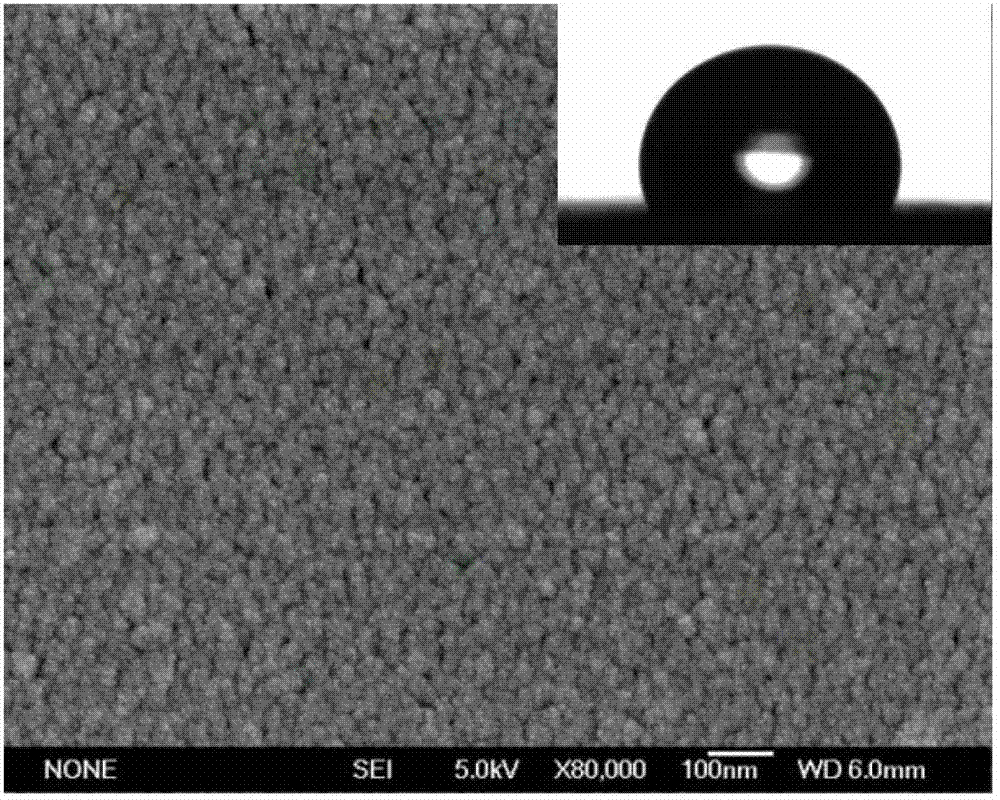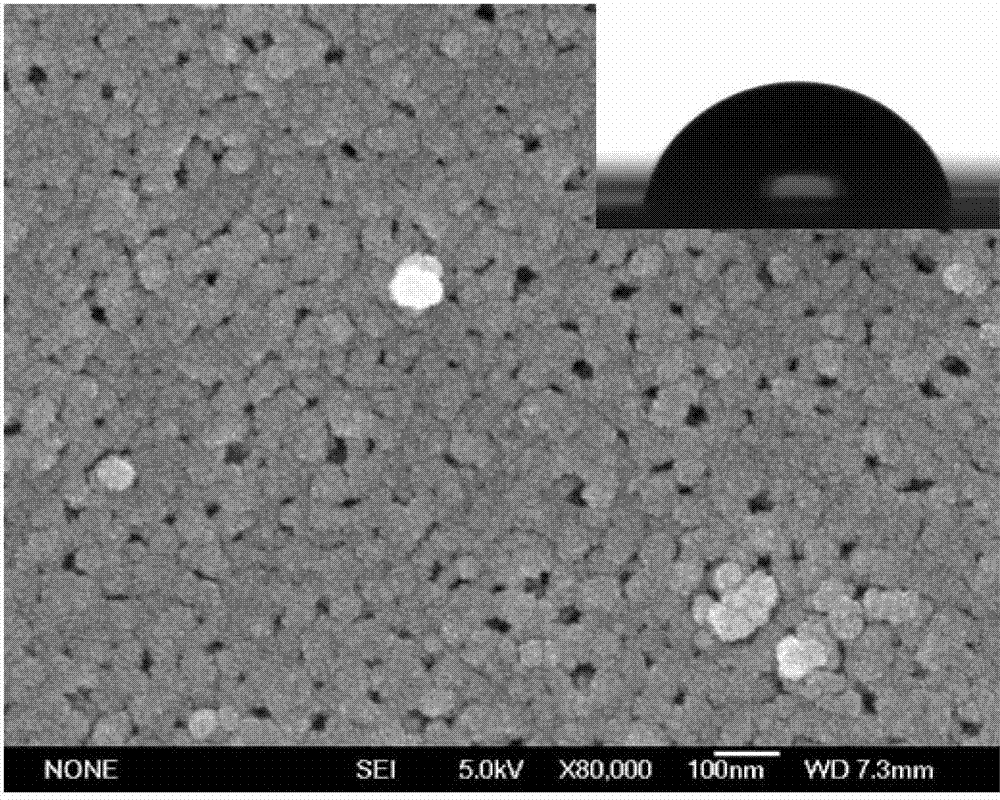A kind of preparation method of hydrophobic porous separation membrane
A porous separation membrane, hydrophobic technology, applied in semi-permeable membrane separation, chemical instruments and methods, membrane technology, etc., can solve the problems of narrow material selection, difficult control of pore structure, poor hydrophobic stability, etc., to achieve hydrophobic stability Good, high hydrophobic stability, high porosity effect
- Summary
- Abstract
- Description
- Claims
- Application Information
AI Technical Summary
Problems solved by technology
Method used
Image
Examples
Embodiment 1
[0036] Weigh 0.5g of polyethersulfone (PES, E6020P, BASF) and 0.031g of p-methoxyphenol (as a polymerization inhibitor), add 1.0ml of TEMAc-8 monomer and 49ml of DMAC into the mixture, and pass it under magnetic force at 60°C Stirring for 12 hours gave a homogeneous solution. Blow nitrogen into the homogeneous solution for 20 minutes, seal it for storage, and then place it in 60 The irradiation reaction was carried out in the Co source chamber, the irradiation dose was 5.1 kGy, and the dose rate was 1.5 kGy / h. After taking out, methanol was used as a precipitant to fully precipitate and suction filtered, and the filtrate was subjected to Soxhlet extraction for 72 hours with F113 as an extractant to remove homopolymers, and graft polymer 1 was obtained.
[0037] A hydrophobic porous separation membrane was prepared by using a lyotropic phase separation method: the grafted product 1 was dried in a vacuum oven at 60° C. to a constant weight. Weigh 1.5g of grafted product 1, 15....
Embodiment 2
[0039] The irradiation grafting conditions were the same as those in Example 1, wherein the amount of monomer TEMAc-8 and solvent DMAC added were 4.0ml and 46ml, respectively, to obtain graft polymer 2. The membrane-making method and membrane-making conditions in Example 1 were used to obtain a hydrophobic porous separation membrane 2, and the method in Example 1 was used to measure the membrane distillation desalination performance of the hydrophobic porous separation membrane 2.
Embodiment 3
[0041] This embodiment is a blank embodiment. The PES in Example 1 was selected as the film-making material, and the composition of the casting solution was 17g PES, 80g DMAC, and 3g lithium chloride, and the wet film 3 was obtained according to the film-making method and film-making conditions in Example 1. The wet film 3 was naturally dried to obtain a PES film. The membrane distillation desalination performance of the PES membrane was measured by the method in Example 1.
[0042] figure 1 It is the infrared spectrogram of graft polymer 1, 2 and PES in above-mentioned embodiment 1~3. The results show that compared with PES, grafted polymers 1 and 2 are at 1740cm -1 There is an additional characteristic peak of the ester group, which proves that the monomer TEMAc-8 has been successfully grafted onto PES.
[0043] Table 1 is the performance comparison of the graft polymer obtained in Examples 1-3, the hydrophobic porous separation membrane, PES and the PES membrane. The r...
PUM
| Property | Measurement | Unit |
|---|---|---|
| contact angle | aaaaa | aaaaa |
| contact angle | aaaaa | aaaaa |
| contact angle | aaaaa | aaaaa |
Abstract
Description
Claims
Application Information
 Login to View More
Login to View More - R&D
- Intellectual Property
- Life Sciences
- Materials
- Tech Scout
- Unparalleled Data Quality
- Higher Quality Content
- 60% Fewer Hallucinations
Browse by: Latest US Patents, China's latest patents, Technical Efficacy Thesaurus, Application Domain, Technology Topic, Popular Technical Reports.
© 2025 PatSnap. All rights reserved.Legal|Privacy policy|Modern Slavery Act Transparency Statement|Sitemap|About US| Contact US: help@patsnap.com



